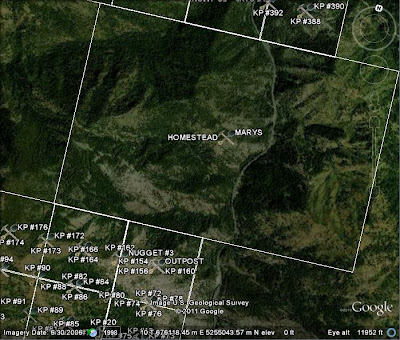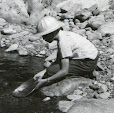First the bad news: Governor Gregoire wants to reduce the state's budget deficit by making the Hydraulic Project Approval (HPA) program fee-based. It seems WDFW has been working on legislation to make this happen and may be submitting their bill to the legislature within a week.
According to our information, if passed, the law would assess fees for a five-year Class 2 permit of $150 and for a five-year Class 3 permit of $1000 to $5000. There would be no fee for working within the constraints of the
Gold & Fish pamphlet.
In order to prevent the foregoing fees from becoming an uncomfortable fact of life, members of the mining community should contact
Governor Gregoire, the
Senate Ways & Means Committee and the
House Ways & Means Committee and voice their opposition to fee-based HPAs.
If you need "Talking Points" for your communications when you call, write, or fax the Governor and the committees, feel free to choose from those listed below:
*There will not be an increase in revenue as the largest users of the program are State Agencies;
*There will be an increase in cost to the agencies for accounting, and therefore to the taxpayers;
*The cost of the program will be borne by already financially strapped Counties;
*Federal agencies have ruled that Small Scale Mineral Prospecting and Mining is a less than significant activity and as such does not rise to the level of coming under the statute that regulates “construction projects in state waters;”
*Most Small Scale Mineral Prospectors and Miners are on fixed incomes and could never recover the cost of a permit;
*An unreasonable fee would create criminals as some people would not obtain a permit that they could not afford;
* A fee could eliminate the Small Scale Mineral Prospecting and Mining community which is a significant part of Washington State's Heritage;
*Any fee imposed must be reasonably based on the scope of the activity and as the scope of the activity is essentially non-existent, so should be any fee;
*If a fee is to be imposed to our less than significant activity, it should be imposed upon ALL activities that utilize the HPA program.
And do remember to include your name, address, and phone number in any correspondence in case someone wishes to contact you for more information.
And now for the good news: On January 17,
HB 1233 ("Streamlining state environmental permitting through the elimination of the hydraulics project approval process") was introduced. The next step is for it to be heard by the
House Agriculture & Natural Resources Committee.
As it appears this bill is the best shot the mining community is likely to get this year for the elimination of the HPA requirement, miners are advised to 1) contact their district Senator and request that he/she look at HB 1233 and sponsor a companion bill in the Senate and 2) contact the
Agriculture & Natural Resources Committee asking that HB 1233 be heard and passed out with a “Do Pass” recommendation and give your “PRO” vote.
Some examples of "Talking Points" to include with your communication are:
*At 62 years of age the HPA process is antiquated;
*Prior to 1949, this process was for the administration of irrigation/water rights;
*The HPA program financially burdens the citizens of the state through duplication of resources;
*The HPA program is cumbersome, subjective and unequally applied;
*The HPA program has been a subject of legislation for over 11 years;
*The HPA Task Force reported in 2002 that the program duplicates other permits;
* In 2008, HB 2530, "Studying the effectiveness of the existing hydraulic project approval process," was introduced. This study would have considered the effectiveness of legislative enactments, implementation by WDFW, and the impact that historic funding levels have had on the program's effectiveness, with focus on both the level of compliance as well as the actual fish protection offered in instances of full compliance. This legislation was not enacted;
*HPA’s are being required for projects that do not “use, divert, obstruct, or change the natural flow or bed of any of the salt or fresh waters of the state,” such as bridge painting or guard rail replacement;
*The HPA process is a leading CAUSE of property loss experienced during high river flow or flood events.
Again, remember to include your contact information with your correspondence.























